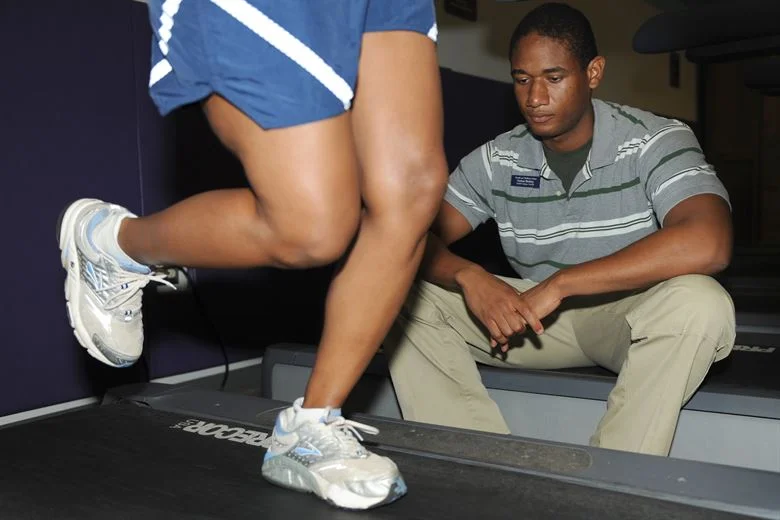You have been training for the marathon for 3 months now. You are at a good pace and working towards your 10th mile in your program when you start to feel pain in the front of your leg. Have you hit your ceiling? Or do you just have shin splints?
Shin splints are a common problem with runners and fast walkers. Shin splints can be due to a variety of dysfunctions including too much leg rotation, insufficient ankle joint mobility or misdiagnosed altogether and actually be radiating pain from your back. The most common reason for shin splints are over-powering and tight calf muscles (back of the leg) versus weak shin muscles or dorsiflexors (front-side of the leg). So how does this wildly imbalanced leg musculature occur? Runners and power lifters have already deciphered the problem without even knowing it. Have you ever seen a lifter where shoes that lift up their heel? Have you noticed the trend towards forefoot running? These ideas have been put into practice for different mechanisms but have the same root: your calf muscles. Let me explain:
In a runner who is going for speed, using a forefoot strike is meant to increase forward momentum. But it benefits the runner's performance in another way. By avoid heel strike, the runner also avoids the pull of tight calf muscles which can slow you down through extra energy expenditure. Landing on the heel forces you to lift your foot up using the front shin muscles against those tight calf muscles. In this scenario, the runner has created a tug of war at the ankle which makes running harder and inefficient. (This is not to say one should avoid heel strike strategy as running should be individualized).
Now lifters with their specialized lifting shoes have the same dilemma. As one squats, they come to a point where they have to deal with the tight calf. By lifting their heel with these specialized shoes, they have created a way to get around the issue and delay the onset of calf tightness.
So practically, how do we start addressing the imbalance and create a healthier ankle environment? The usual answer is calf stretching. But taking a step back even before the calves get tight, we can change something even easier and more fundamental. With running, we like to talk about heel strike versus forefoot (and don't forget midfoot) strike. What about forefoot versus heel strike in walking? Or even better, forefoot versus heel weightbearing. By shifting our weight back to the heels, we start to engage the front leg muscles and give our calf muscles a little break. By decreasing the demand on the calf muscles, we keep them from overworking and tightening up and subsequently buold some strength on the opposite side of the leg creating a more balanced system.
Note: Before implementing any new strategies, a physical therapist should be consulted to see if it is right for you.
Dr. Joshua Mazalian, DPT, OCS, CSCS is the owner of JAM Sports and Spine in Los Angeles and specializes in sports and orthopedic physical therapy. You can reach him on Twitter @jamsportsPT and Facebook as well as email at info@jamsportsandspine.com

